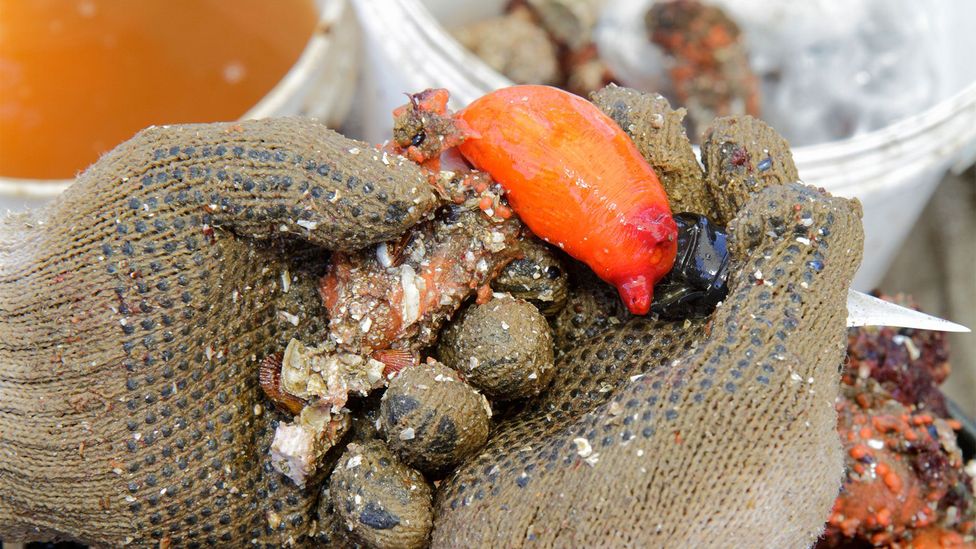At first sight, the piure (also known as the pyura chilensis) is not the most appetising seafood. While served all along the coast of Chile, its strong, iodine taste paired with its "ugly" appearance can be unappealing to consumers, who tend to prefer the softer flavour of mussels, clams, scallops and the beloved loco, a Chilean sea snail that's typically eaten with mayonnaise. However, as more chefs creatively incorporate it into dishes, piure could very well become the next hero of Chilean cuisine.
Found on the coasts of Peru and Chile, piure is a tunicate (also known as a sea-squirt) – a spineless marine animal that feeds by sucking in water through one syphon and expelling through the other – that looks like something out of this world. Appearing as a solid rocklike form, each chunk is made up of dozens of piures lumped together, all peppered with what resembles lumpy warts and strands of hair (algae).
In the noisy fishing port of Valparaiso, on the coast of central Chile, piure is purchased in either its natural "rock" shape, or as ready-to-eat cleaned "udders". One customer asked for piure in the rock form and pointed to his selection: as the vendor lifted it onto the scales, it expelled seawater from miniature holes that punctuated the surface.
While different types of piure exist globally, only the pyura chilensis species is edible, explained Dr Pilar Haye, Deputy Director of the Millennium Institute in Coastal Socio-Ecology (Secos).
Haye helpfully explained the beguiling shape of the piure's rocky disguise is a substratum that can consist of one to thousands of individuals that live in a matrix community. "The red, soft body is the part you can eat, which is surrounded by something that looks like a rock," said Haye. "It's an exoskeletal structure produced by the piures for them to live inside".
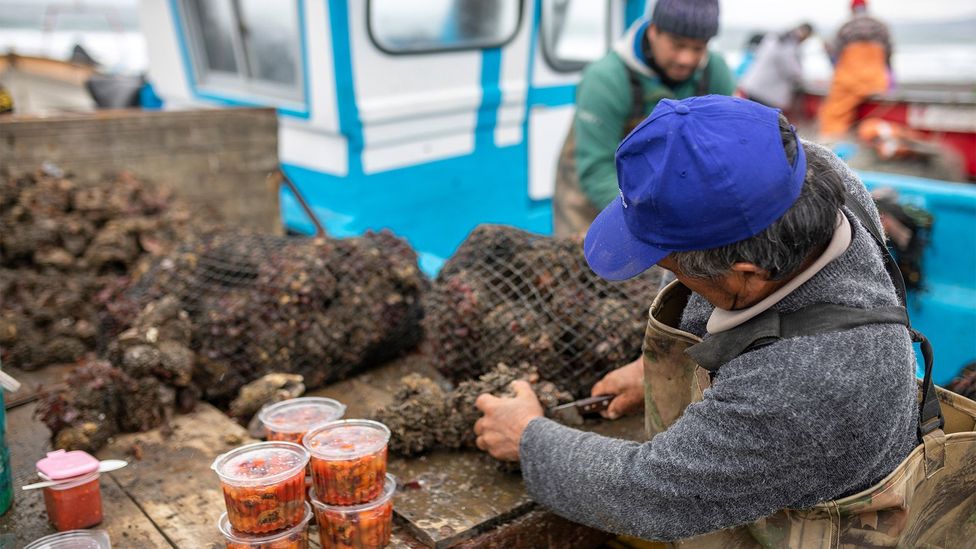
Piure can be purchased in either its natural "rock" shape, or as ready-to-eat cleaned "udders" (Credit: Francisco Javier Ramos Rosellon/Alamy)
Chef Rodrigo Sepúlveda Vargas frequents the Valparaiso port to source piure for his restaurant, Quintaycocina. He remembers eating it from a young age and being immediately fascinated. "It's like diving into the sea with your mouth wide open, because it tastes like the ocean," he said, donning an apron in his restaurant's kitchen.
"It's like diving into the sea with your mouth wide open."
"Piure is not traditional Chilean cuisine; it's mostly people from the fishing bays that eat it," said Sepúlveda Vargas, who values piure's healthy properties: "Piure has iron, iodine – it's high in vitamins. It's my mission to get people used to eating it."
In his restaurant, Sepúlveda Vargas washes the pungent rock before taking a knife to cut into its surprisingly soft, porous surface. He then claws out the fleshy, strikingly bright red piure. He pulls out around a dozen of the small creatures from the single rock.
A country with 6,435km of coastline, piure preparations differ from bay to bay: in the colder, southern part of Chile, piure is hung from ropes to dry, then added to soups and stews. In the arid north, piure is eaten fresh and raw with a lemon juice dressing.
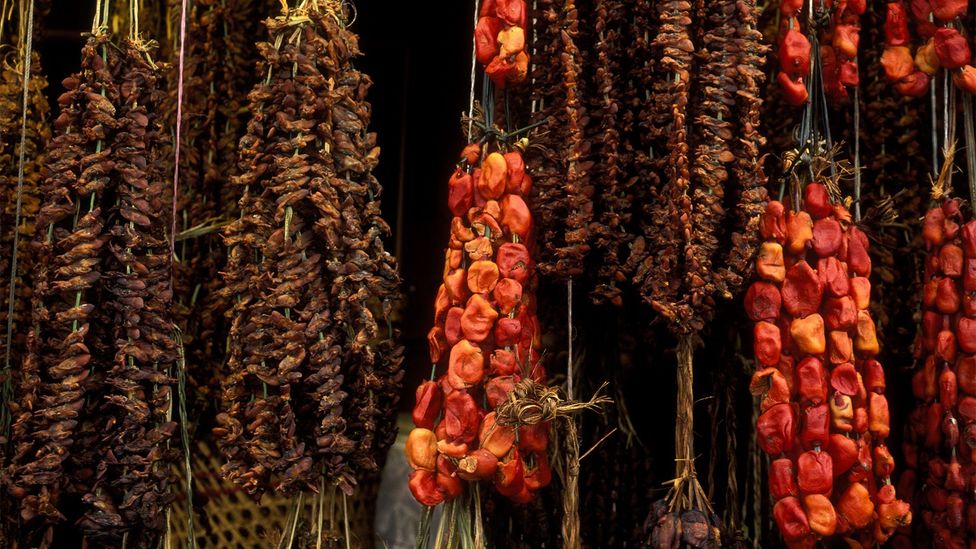
In the colder, southern part of Chile, piure is hung from ropes to dry (Credit: Robert Fried/Alamy)
For those trying piure for the first time, Sepúlveda Vargas recommends eating an empanada. At Quintaycocina, he combines small amounts of chopped piure with onion, coriander and cheese. The mixture is sealed in a light dough casing, which is then fried.
While piure has been long enjoyed by coastal communities, a number of chefs in the capital city of Santiago, which is 96km inland, are now working to get piure eaten by city-dwellers. Thanks to a global gastronomic push for sustainably sourced local ingredients, the piure has become a star ingredient in some of Chile's best restaurants in the glitzy, upper-class districts of the capital.
In the country's most exclusive restaurant, Boragó, chef Rodolfo Guzmán channels piure's distinct taste into dishes such as a ceviche with clams. To best understand piure's flavour and textures, Guzmán broke it down and experimented with different cooking techniques. He discovered that the piure skin has a "very citrus… immensely citrus" taste, while its interiors are "intense, full of iodine". He found that separating the sea-squirt and using the skin and insides in different recipes was key to showcasing its uniquely diverse and flavourful essence. For example, the skin is perfect in a light and floral springtime ceviche, while the innards are best suited to a heavier garum (fish sauce).
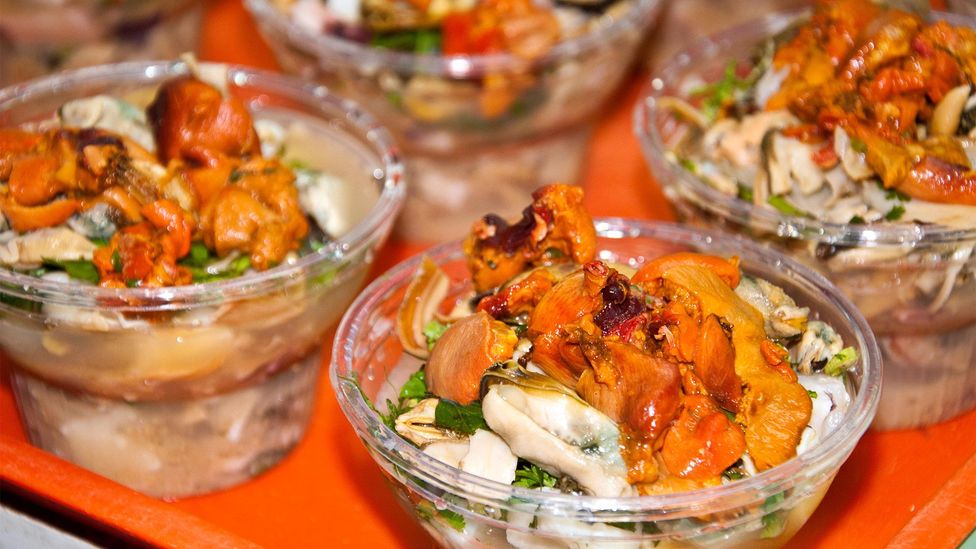
Piure can be used in seafood dishes such as a ceviche (Credit: Andreea Dragomir/Alamy)
"Boragó is about the momentum of the Chilean territory," Guzmán said, explaining that the establishment was born from a mission to use Chile's endemic ingredients in unprecedented ways. Piure is one of Guzman's favourites. "It opens a whole new spectrum of possibilities for us to cook with."
"It opens a whole new spectrum of possibilities for us to cook with."
On the restaurant's winter menu, Guzmán serves a sea pesto that mixes the piure's potent insides with seaweed extracts over a mariscal, a hot seafood stew. "It's very soft. It's not like biting the whole piure; we're grabbing that florality and beautiful taste of the sea," he said. "Piure has all of that."
While it may sound unpleasant, Guzmán explained that when it comes to piure, how much is used is key. You want to add a punch, but not overwhelm the palette. "Proportion in cooking is as relevant as the quality of the ingredient," he said.
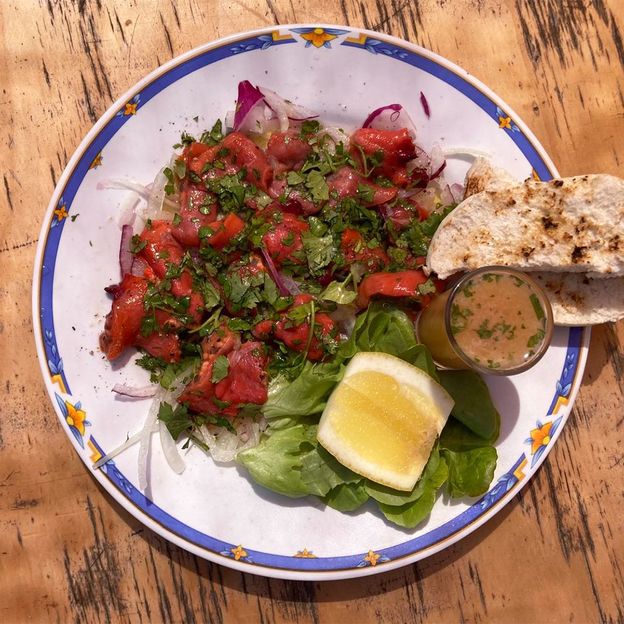
The piure has become a star ingredient in some of Chile's top restaurants like Boragó (Credit: Charis McGowan)
"The work of haute cuisine involves transforming simple ingredients into something more complex," said Ana Rivero Pérez, food journalist and director of communications of Ñam Chile, the country's most important annual food festival.
Rivero Pérez "loves" Guzmán's experiments with piure, but also values Santiago seafood establishments like La Calma, Squella and El Ancla for serving piure in simpler, more traditional ways, like in soups or chopped up raw in salads. "They are bringing people closer to piure, as found in its natural state, direct from the sea."
Rivero Pérez heralds the piure as a "beautiful" seafood and hopes that more Chileans will dare to discover its taste. "Even though Chile has 4,000 miles of coastline, Chileans have a low consumption of fish and seafood," she said. "Piure is just one example of what should be more present in our meals."
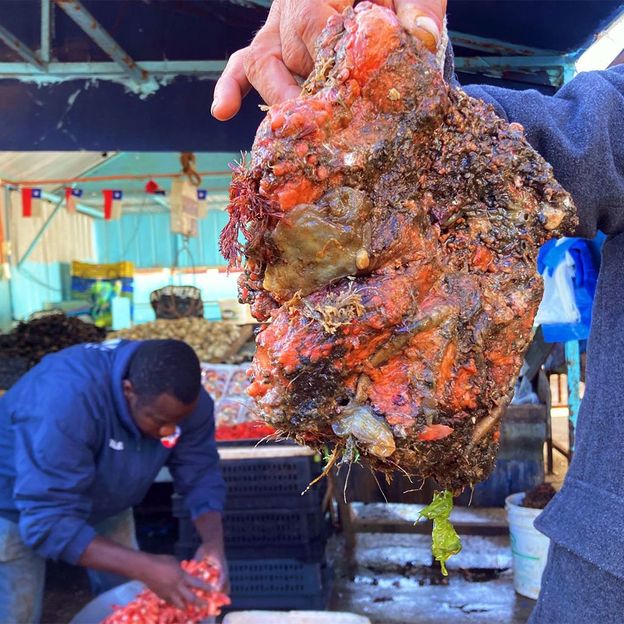
Appearing as a solid rocklike form, each chunk is made up of dozens of piures lumped together (Credit: Charis McGowan)
Back in Quintay Cocina, Sepúlveda Vargas prepares a piure salad mixed with onion, coriander, lettuce and copious amounts of lemon juice squeezed on top to balance out the sea-squirt's intense, metallic taste. Separately he puts pisco, a Chilean fermented grape spirit, in a mixer with the remaining piure pieces, then strains his concoction into a shot glass for diners to wash down the piure's lingering taste.
Sepúlveda Vargas spoons his piure salad on a piece of toasted bread and takes the first bite.
"It's pure sea," he said, his eyes wide after experiencing the sea squirt's potency. "I love it."
BBC.com's World's Table "smashes the kitchen ceiling" by changing the way the world thinks about food, through the past, present and future.
---
Join more than three million BBC Travel fans by liking us on Facebook, or follow us on Twitter and Instagram.
If you liked this story, sign up for the weekly bbc.com features newsletter called "The Essential List". A handpicked selection of stories from BBC Future, Culture, Worklife and Travel, delivered to your inbox every Friday.
